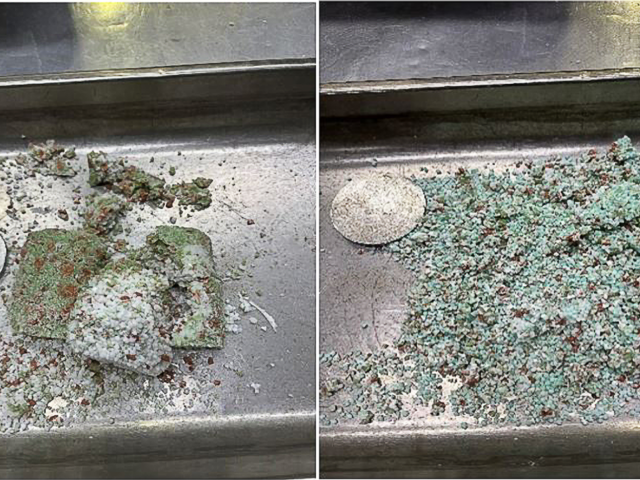
Reduce Clumping in Dry Fertilizer Blends With ESN
Humidity and warm temperatures can cause fertilizer blends to take on moisture over …
An Idaho study compared ESN applied at emergence or at planting with conventional urea in multiple applications. A single ESN application at emergence or at planting produced yields similar to or greater than multiple applications of urea. Split urea application is 50% of nitrogen (N) at emergence & 50% in three applications in season. ESN was broadcast and incorporated. The 100% rate is 200 lbs N/acre. Fewer applications means savings of time, fuel, labor and equipment, saving the grower money while growing high yielding, high quality potato crops. ESN is indeed a more efficient nitrogen fertilizer.

Figure 1. One ESN application increased Russet Burbank yields over conventional split applications in this Idaho study (average of three locations)
Source: Dr. Bryan Hopkins, Brigham Young Univ.
Minnesota study compared ESN applied at emergence or at planting with multiple applications of conventional urea. As in the Idaho study, a single ESN application at emergence or at planting produced yields similar to or greater than multiple applications of urea. Split urea application included 100 lbs N/ac at emergence, 20 lbs N/ac at hilling, and four post-hilling applications of 20 lbs N/ac at approximately 2 week intervals. ESN was broadcast and incorporated. N rate shown includes 40 lbs N/acre at planting from DAP. Fewer applications means savings of time, fuel, labor and equipment, saving the grower money while growing high yielding, high quality potato crops. ESN is a smarter nitrogen fertilizer.

Figure 2. ESN increased Russet Burbank yields over conventional split applications in this multi-year Minnesota study. Yields are averages of three years.
Source: Dr. Carl Rosen, Univ. of Minnesota.
| Attachment | Size |
|---|---|
| ESN Replaces Multiple Applications | 1.95 mb |

Humidity and warm temperatures can cause fertilizer blends to take on moisture over …

Recent research in Idaho identified the effectiveness of ESN as the nitrogen source …

For an in-depth discussion on the various nitrogen loss mechanisms and how to …